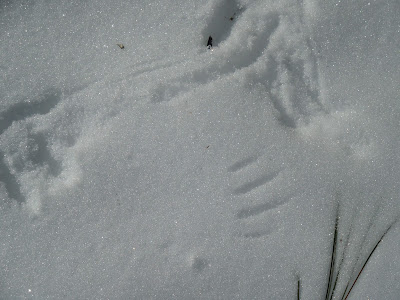Citizen science projects are an excellent way for students to make authentic connections with science and those who study it. Two projects that I have found worthwhile for students are the NASA S'COOL program and Project BudBurst. Both involve students collecting data and engaging deeply with their natural surroundings.
NASA S'COOL
NASA S'COOL is a free program that gives students the opportunity to learn about clouds and their impact on weather and climate, while contributing data to scientific research. It is an excellent extension to a weather unit. When in the classroom I used this program with 5th graders for several years, but it could definitely be used with older kids as well. In addition to teaching students how to collect scientific data, they offer lesson ideas based around weather patterns and clouds.
 |
| An example of cirrus clouds. image by: S'COOL |
S'COOL, or Student Cloud Observations On-Line, teaches educators and students how to observe and identify cloud types to provide "ground-truth" data for the CERES (Clouds and the Earth's Radiant Energy System) satellites. The CERES satellites are gathering data and cloud images from their orbit above the Earth's surface. This is only one side of the picture. Students collect and provide data from the ground, to corroborate what is seen from above. The result is called "ground truth". In combination you then see the whole picture.
Students can learn a lot from clouds- including how to predict the weather from them. Once data is collected during a CERES satellite overpass the students input it on-line and receive a report back. S'COOL requests students analyze these reports to see how their data matches (or doesn't match) the CERES data. It is a dynamic, authentic process. The director of the project, Dr. Lin H. Chambers, is always helpful and at times has even sent the students messages about their data. Once we noted that it began to hail during an observation. Lin wrote back a simple "Be careful out there!" and the kids thought it was great. Knowing that they were sending their data to a scientist who then communicated back to them solidified that this was the real deal!
Even PBS SciGirls have gotten in on the S'COOL action!
Connect with NASA S'COOL through their website, Facebook page , and Twitter.
Project BudBurst
Project BudBurst is a citizen science project that utilizes data collected by volunteers. The purpose of the study is to see how changes in climate are affecting the life stages (or phenology) of plants. Anyone can participate. I have used the "junior" version of this project, BudBurst Buddies, with 2nd graders as part of their plant unit. BudBurst Buddies is based on a story of children who observe trees around their home. They model how kids can also do this at their home. After kids have submitted 4 observations of a particular tree or shrub, they can print out a certificate.
For older volunteers in the program, observations can be made at any point in time. There are clear directions for adults and they are building quite the library of lesson plans to help implement the program in classrooms. The beauty of a citizen science project like this is that over time there is a large pool of data that can be accessed. Students can see where other people have observed in real time and view data from previous seasons. The scientists and educators who work with the project are very approachable and excited to have students working with them. You can even submit questions through their "ask a scientist" page.
 |
| Purple lilacs with a tiger swallowtail pollinator! Project BudBurst observation. image: ©Ross Feitlinger |
To learn more about Project BudBurst visit my posts, "Project BudBurst: Easy, Authentic Plant Science" and "See it? Share it! Flower and Leaf Buds, Could it Be True?" You can also connect with them through their website, Facebook page, or on Twitter.






























